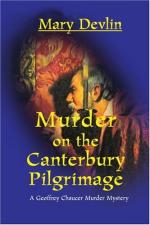|
This section contains 2,272 words (approx. 8 pages at 300 words per page) |

|
SOURCE: "A Descriptive Catalogue," in Blake: Complete Writings, edited by Geoffrey Keynes, Oxford University Press, 1966, pp. 563-85.
Blake is perhaps the most esteemed English poet and artist of the Romantic period. In the following excerpt from his 1809 "Descriptive Catalogue" of his paintings and drawings, he describes Chaucer's Canterbury pilgrims as examples of "universal human life. "
The characters of Chaucer's Pilgrims are the characters which compose all ages and nations: as one age falls, another rises, different to mortal sight, but to immortals only the same; for we see the same characters repeated again and again, in animals, vegetables, minerals, and in men; nothing new occurs in identical existence; Accident ever varies, Substance can never suffer change nor decay.
Of Chaucer's characters, as described in his Canterbury Tales, some of the names or titles are altered by time, but the characters themselves for ever remain unaltered, and consequently they...
|
This section contains 2,272 words (approx. 8 pages at 300 words per page) |

|


